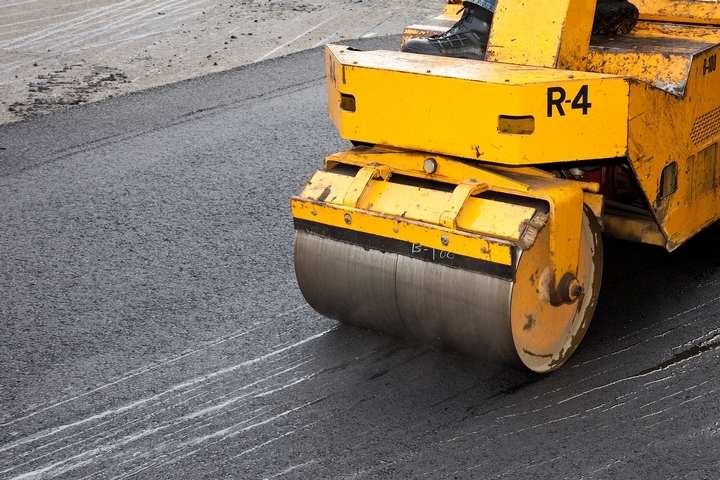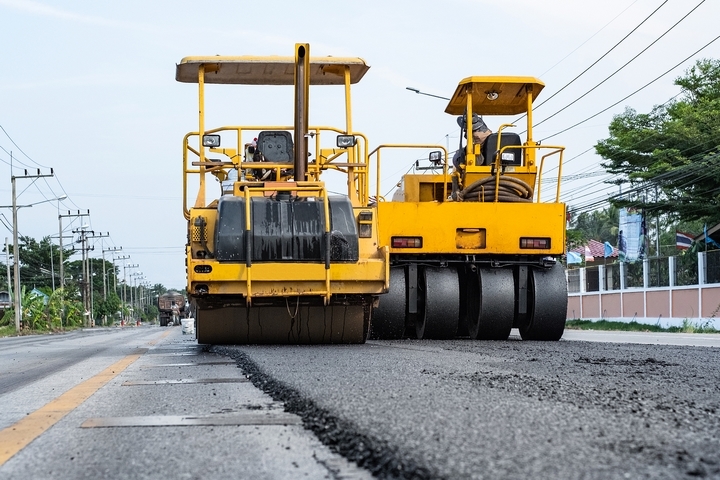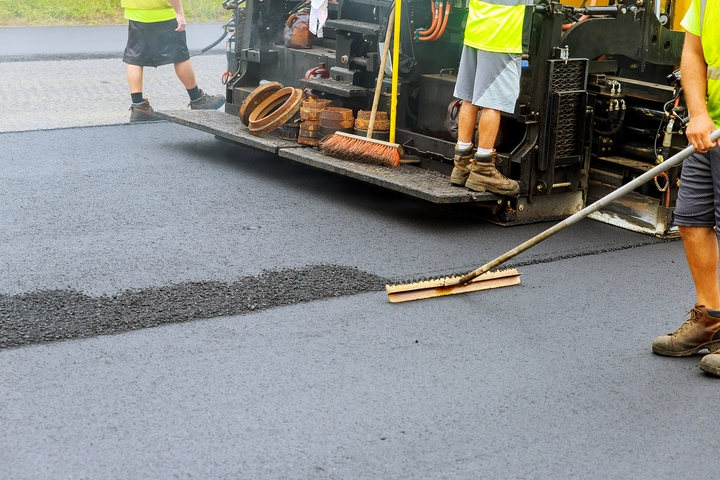
Asphalt is the most versatile pavement material. It’s also the most used, reused, and recycled pavement material. Whether you need to pave a parking lot, repave a driveway, or clear up a pothole in a street, you’ll want to use asphalt.
There are several different varieties of asphalt you could use for your next paving project. Discover the different types available and the distinctions between them. Here are the eight different types of asphalt paving:
1. Hot-Mix Asphalt Paving

Hot-mix asphalt is one of the most popular types of asphalt paving, and it is most commonly found in construction. It’s also known as bitumen, blacktop, or just hot mix. Hot-mix asphalt pavements can be further classified as stone-matrix mixes, open-graded hot-mix asphalt, and dense-graded mixes.
Dense-graded mixes are the most commonly used hot-mix asphalt because they’re impermeable – water runs away from the surface area. You can have either coarse-graded or fine-graded varieties of dense-graded mixes. You can use these mixes on any and all traffic conditions for both asphalt resurfacing and repairing.
Stone-matrix asphalt maximizes the pavement’s resistance to rutting and is known to be highly durable. It has a higher asphalt content and is more expensive than dense-graded mixes. You can use it on both driveways and roadways, but since it’s a more expensive option, it’s best used on high-volume interstate highways where endurance and durability are top priorities.
Open-graded mixes are hot-mix asphalt pavements that are designed with only crushed stone and very few grains of sand. Overall, hot-mix asphalt has construction and design features that give it a nice finished appearance once installed. For this reason, it’s considered the best asphalt type for driveways. Its appearance complements the home and improves curb appeal. It’s often used for patching.
Hot-mix asphalt is durable and strong, cost effective, and low maintenance. It’s unaffected by road salt and can effectively withstand freezing and thawing, too. However, these types of asphalt paving must be used immediately after purchasing. The more it cools, the more difficult it is to work with. And once it cools completely, it’s hard as a rock.
2. Warm-Mix Asphalt Paving

Warm-mix asphalt is similar to hot-mix asphalt. The only difference is that it’s approximately 50 to 100 degrees Fahrenheit lower in temperature. Reducing the temperature of asphalt has cost-saving and energy-saving benefits. You can reduce the production of greenhouse gases and fuel consumption.
Further, the technologies that allow this asphalt to be paved at lower temperatures also allow for better compaction of paving and extend the paving season.
3. Porous Asphalt Paving

This paving material has been around since the 1970s. As its name suggests, this material is porous and thus allows water to drain through it. The water drains into a recharge bed and then, eventually, into the soil underneath the pavement. For this reason, it’s commonly used to pave parking lots.
Porous asphalt is a cost-effective choice with a long lifespan. Use this type of asphalt paving if you need to improve the quality of ground water or enhance storm water management. Expect it to last 20 years or more.
4. Perpetual Asphalt Paving

This type of asphalt uses a multi-layer paving process as a means to extend a roadway’s lifespan. To install perpetual pavement, a strong, flexible first layer is paved first. This layer prevents cracks in the bottom of the road. Then, a strong and permanent middle layer is added. Finally, the last layer known as the driving surface is added. Over time, only this last driving surface needs to be removed and replaced while the bottom and middle layers can remain in place. This reduces replacement costs.
Like porous asphalt, perpetual pavement both long lasting and durable. It’s a good choice of material since its installation process does not disrupt traffic or take up a lot of time to replace.
5. Thin Overlay Asphalt Paving

Thin overlays are products using recycled materials and warm-mix asphalt. These types of asphalt paving are excellent if you’re looking to reduce pavement distress and improve ride quality. What’s more, thin overlays also reduce noise levels and lifecycle costs.
6. Quiet Asphalt Paving

Using a stone mix asphalt, quiet asphalt can reduce road noise by approximately 50%. For this reason, it’s often used as an alternative to costly and impractical noise barrier walls near busy roads and highways. This paving material is commonly installed on roads that are built through existing communities.
7. MC Cold Mix Asphalt Paving

This type of asphalt paving is used at cold temperatures, so it’s slow to cure. As a result, it’s best used in areas with little road traffic. Use MC cold mix for temporary paving fixes only as it’s not considered a permanent application.
8. UPM Asphalt Paving

Also a cold mix asphalt, UPM differs from MC cold mix because it can be used as a permanent fix. UPM is ideal because it can be used in many weather conditions and can fix both dry and wet potholes. This allows for significant versatility when making repairs in just about any paving situation. Once you’ve compacted UPM asphalt, you can immediately drive over it.
As you can see, there are several varieties of asphalt and each is most ideally suited for use in different situations. Understanding the differences between the different types of asphalt can help ensure you’re choosing the right one for your unique paving situation.